Click the links below to skip between Day Trip ideas in and around Cartago:
Embrace the Majesty of Volcán Irazú
Kick off your day trip in Cartago with a visit to Volcán Irazú, Costa Rica’s crown jewel. Towering over 11,000 ft, this active volcano offers jaw-dropping panoramic views. Imagine gazing upon the sprawling Central Valley and even a possible glimpse of the distant Caribbean coast, all from one breathtaking vantage point! But Irazú isn’t just about the views. I live in Cartago and visit this volcano several times a year. It’s very close, making it a great day trip, and the experience is always different. It can be very cold at the top, requiring a sweatshirt and warm pants, and at other times extremely hot. I always get sunburned!
At the trail edge, you can peer into the crater and witness a turquoise lake, a mesmerizing testament to the volcano’s dynamic history. You will also walk on the “beach,” a flat terrace within the greater crater, and climb to the lookout points to spot the country’s other nearby volcanos, including Turrialba Volcano peeking through the clouds. Keep your eyes peeled for unique flora and fauna thriving in this environment and learn about the volcano’s past eruptions through informative displays. You can pay for parking at the visitor center. If you are hungry, you can pick up a snack or a hot drink. Even better, you can plan to stop at one of the small communities on the way back down for a hot coffee or aqua dulce! My favorite is Sueños del Irazú in San Juan de Chicuá. Hot coffee and tortillas de queso con natilla (cheese tortillas with sour cream!) will warm you right up!

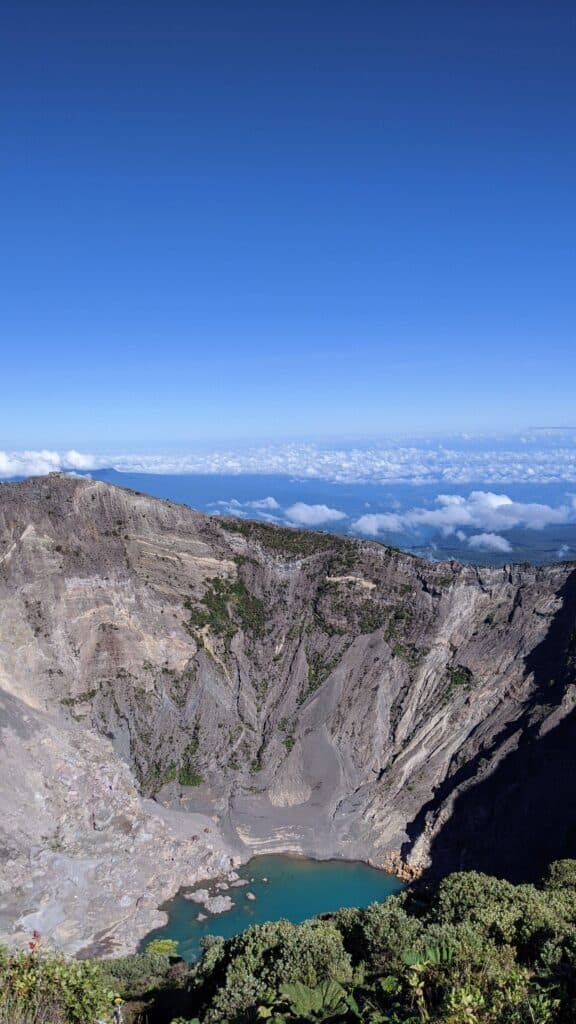
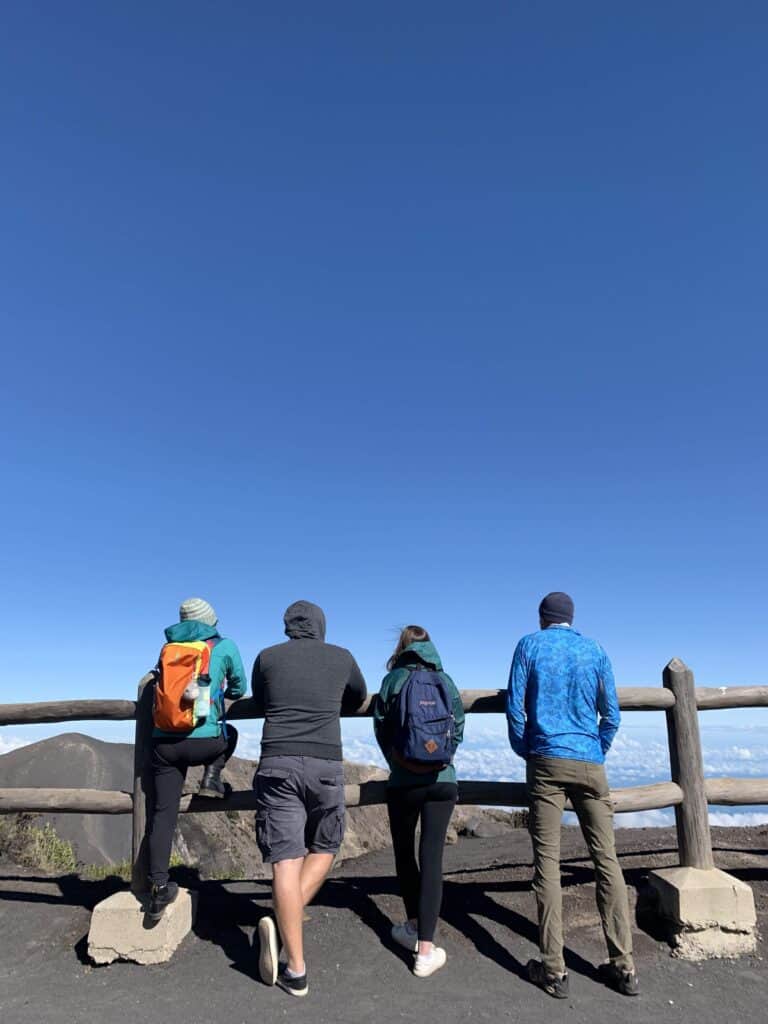
Unveil the Enchanting Secrets of Prusia
Adventure awaits just beyond the bustling city of Cartago! Nestled within the Irazú Volcano National Park lies the enchanting Prusia Forest, a haven for nature lovers and those seeking a tranquil escape. Imagine weaving through a lush tapestry of towering trees, their emerald canopy filtering dappled sunlight onto the forest floor. Breathe in the crisp mountain air, alive with the symphony of birdsong, as you embark on a journey of discovery along the Sendero Completo trail, as highlighted on AllTrails.
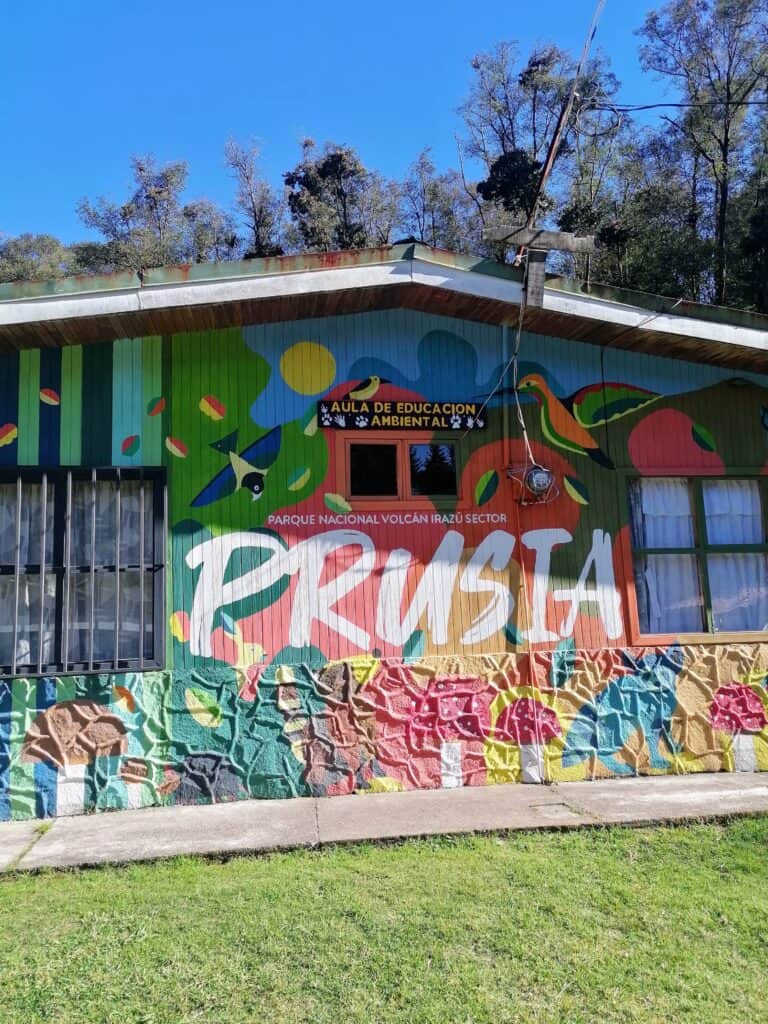
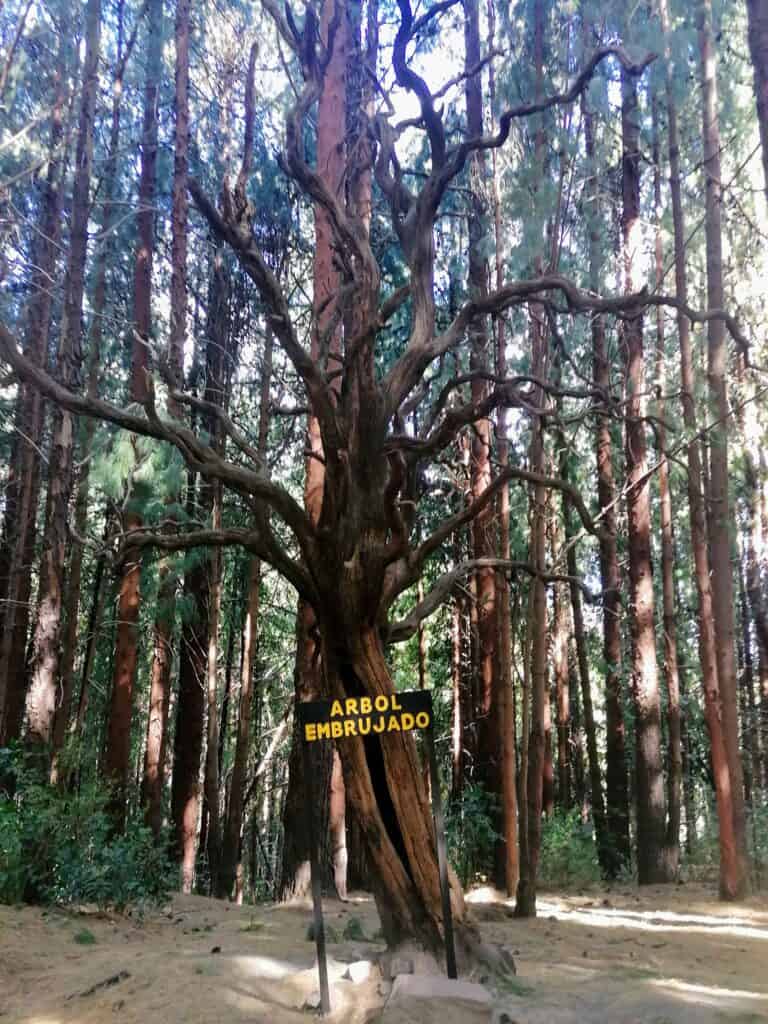
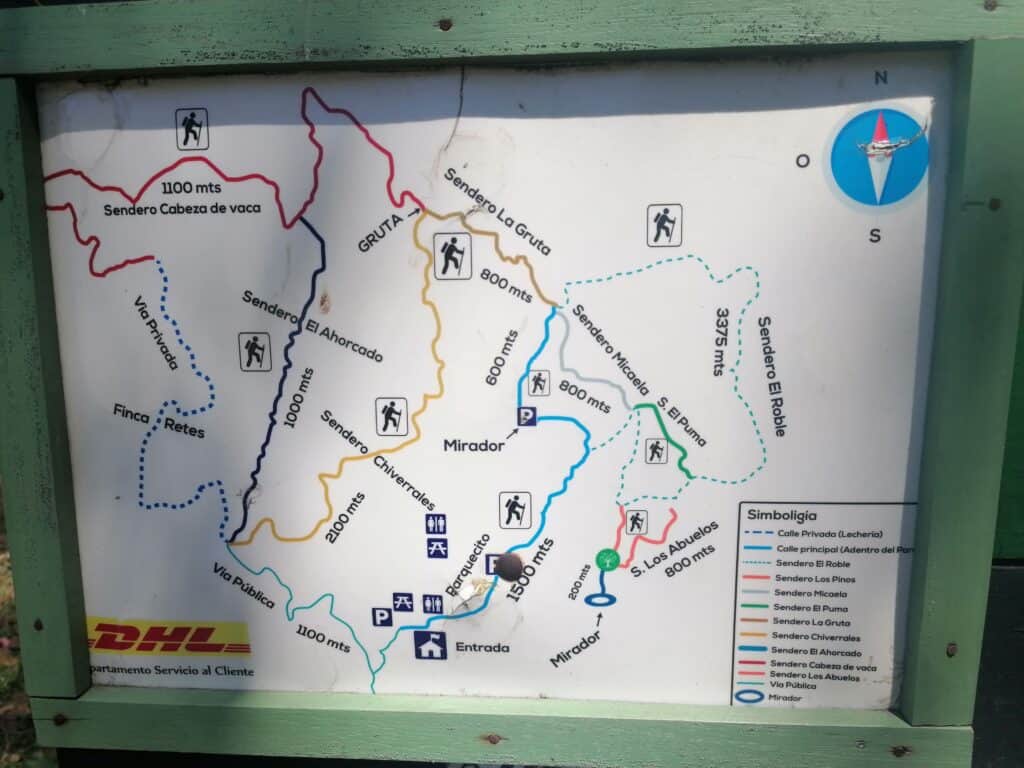
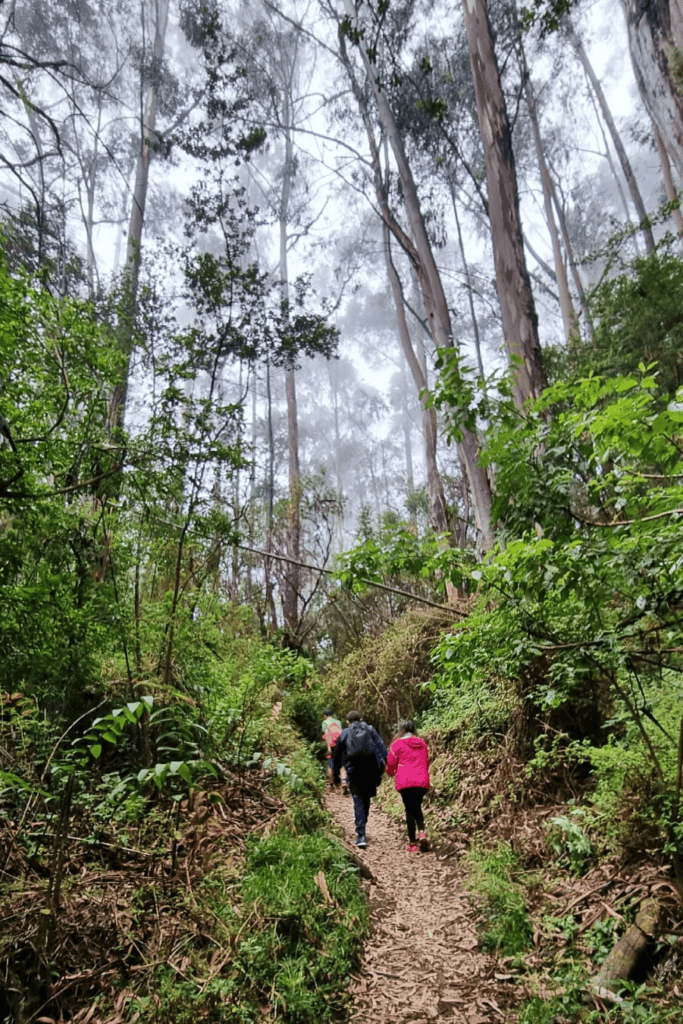
This captivating trail winds its way through diverse landscapes, from dry forests teeming with life to open meadows offering breathtaking vistas of the surrounding mountains. Keep your eyes peeled for a glimpse of shy forest creatures like monkeys and sloths, or marvel at the vibrant butterflies flitting through the air. Whether you’re an avid hiker seeking a challenging trek or a casual nature enthusiast looking for a leisurely stroll, Prusia Forest caters to all levels of exploration. Take a moment to reconnect with nature, find serenity beneath the towering trees, and discover the hidden beauty of this ecological gem. Bring a little cash, as part of the return trail crosses private property, and you have to pay the local family a small amount to continue on the trail to the end.
Explore the Remains of Sanatorio Duran: A Haunting Legacy
Are you intrigued by history with a touch of mystery? Then a visit to the remains of Sanatorio Duran on the slopes of Irazu Volcano is a must-do on your Cartago itinerary. As you approach this imposing structure, perched at an altitude of over 7,500 feet, imagine the stories it whispers. Built in the early 1900s, this sanatorium served as a beacon of hope for those suffering from tuberculosis, a disease then known as “the white plague.”
Standing amidst the cool mountain air, picture the patients who once resided here, seeking solace and treatment within the sanatorium’s walls. Some say the location itself, nestled amidst the dramatic volcanic landscape with its cool mountain air, was believed to benefit the patients’ health. Explore the skeletal remains of the sanatorium, imagining the lives that once unfolded within its walls. Doctors and nurses worked tirelessly in the sanatorium to help people suffering from tuberculosis for almost 60 years. Personally, this place touches the imagination as I wander the halls and look out the windows over the foggy volcanic hillsides. The remnants of beautiful tile floors contrast with the crumbling architecture. That’s part of the fascination with this unique location! Whether you’re a history buff or simply enjoy a touch of the mysterious, Sanatorio Duran offers a glimpse into a bygone era and a chance to connect with the legacy of this haunting yet fascinating landmark. Maybe it will be the setting for your next novel!
Step Back in Time at the Orosi Historical Church
Next, embark on a historical visit to the Orosi Historical Church, a gem dating back to 1743. This church exemplifies the elegance of Spanish colonial architecture, with its simple yet captivating design crafted from adobe and stone. The Franciscans first came to the area in the late 16th century and founded a religious community, long before constructing the church. The indigenous people had been living in this valley for centuries. To learn more, step inside and be mesmerized by the intricate wooden ceiling and the beautifully crafted altar, a true testament to the craftsmanship of a bygone era. The museum houses artifacts that help illustrate the rich but complicated history of the valley. Learn about its role in the interaction between the indigenous population and the Spanish missionaries, and soak in the rich cultural heritage that resonates within its walls. Don’t miss the annual celebration of the Virgen de la Candelaria, a vibrant festival that draws pilgrims from all corners of Costa Rica. After your spiritual immersion, walk through the charming town of Orosi, where small streets full of shops and surrounding coffee plantations complete this historical tapestry. Take some time to find a great breakfast or lunch. My favorite is the Café y Panaderia Suiza, serving delicious local coffee and strudel in the center of town!
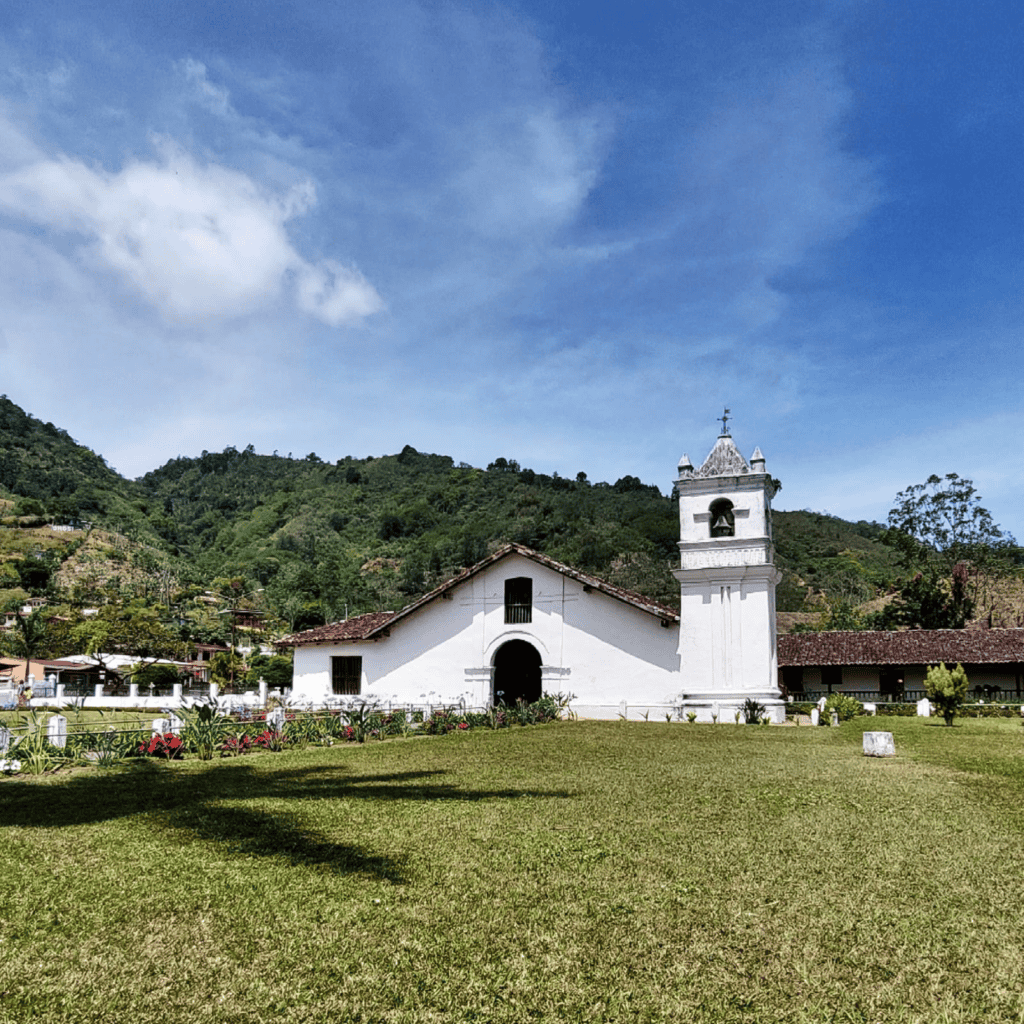
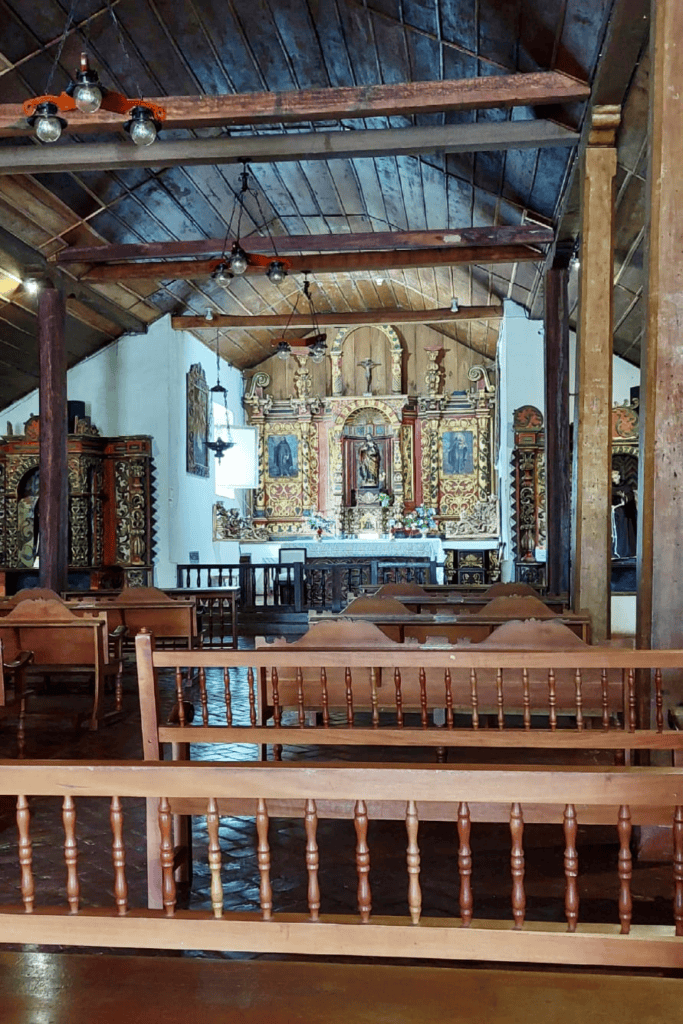
Unravel the Mysteries of Ujarrás and Cartago Ruins
Prepare to be transported back in time as you explore the Ruins of Ujarrás. These remnants, dating back to the late 1500s, whisper stories of a once-thriving community. Floods and epidemics forced its abandonment, but the skeletal beauty of the church remains as a haunting reminder of its former glory. Imagine towering arches and walls that stand as a silent testament to a bygone era. Local legends weave a web of intrigue, with stories of miraculous events tied to the church, including its role in repelling pirate attacks! Breathe in the tranquility of the surrounding garden, a peaceful haven for reflection. Exploring these ruins offers a profound glimpse into Costa Rica’s colonial past and the resilience of its people. Nearby, the Orosí River adds a touch of scenic beauty, making this a must-visit for history buffs and nature lovers alike.
Continuing on your historical quest, journey to the Ruins of Cartago, remnants of what was once Costa Rica’s bustling capital. Imagine standing before the ruins of the Santiago Apóstol Church, originally built in the 16th century, a testament to the early days of Spanish settlement. Earthquakes may have toppled its walls, but the simple yet monumental structure still evokes a sense of grandeur. The Ruins of Cartago, located in the heart of Costa Rica’s former capital, are a striking remnant of colonial and early-modern architectural ambition. The site, known as Las Ruinas de la Parroquia, showcases the incomplete remains of a Romanesque Revival church designed by German-born architect Francisco Kurtze in 1862. This distinctive style, rare in Costa Rica, was brought to life by Italian stonemasons who crafted its heavy stone arches and piers. Construction faced repeated setbacks due to devastating earthquakes, culminating in the near-total collapse of the structure in 1910. Local legend attributes the church’s misfortune to a curse said to have been brought on by Padre Sandoval, a priest accused of killing his brother inside the church. Following the final collapse, the town abandoned the project entirely.

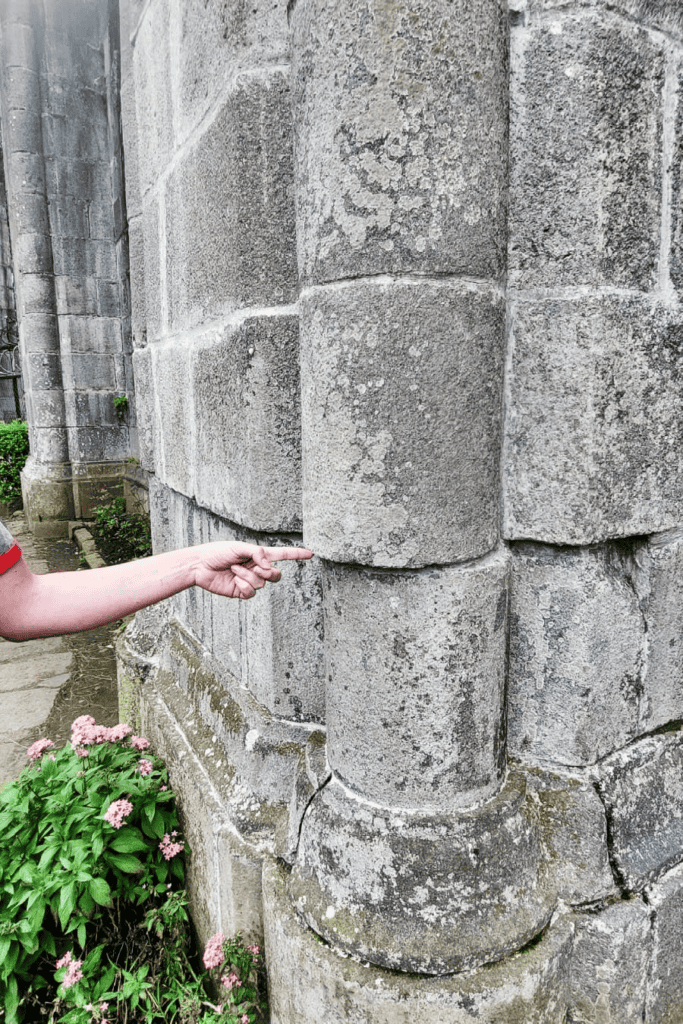
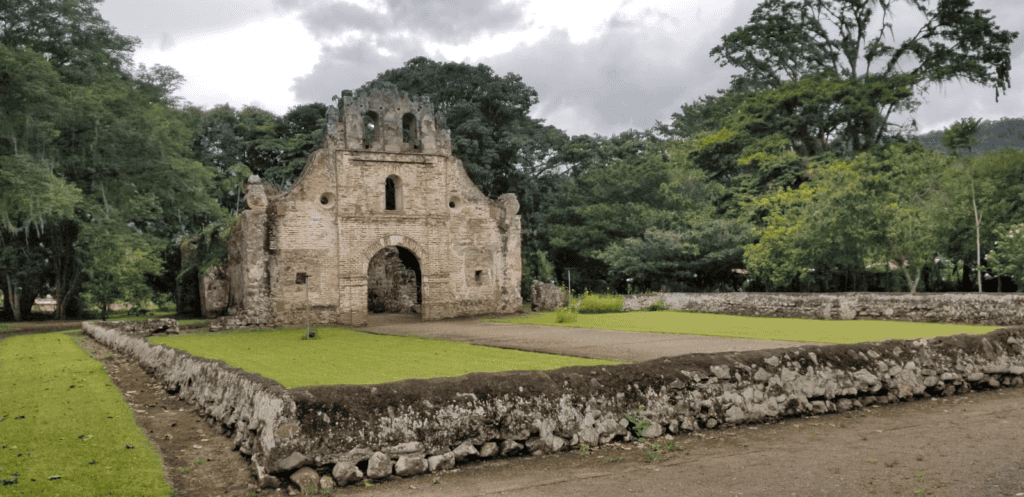
Protected as a national monument, the ruins offer visitors a chance to explore and learn about the church’s history through informative plaques. You can reflect on the challenges and triumphs of early Costa Ricans as you soak in the serene beauty of the surrounding gardens. When the gates are open, you can spend time walking through the beautiful gardens surrounded by the remaining walls. If you look carefully, you can find further evidence of the earthquakes. I like pointing out to my friends where you can see a shift in the structures at the base of the walls, imagining how they’re still standing. From the plaza in front of the ruins, you can visit shops, restaurants, and even the Cartago Municipal Museum.
Find Solace and Beauty at the Basilica de Los Angeles
Now, let’s shift gears and embrace the spiritual serenity of the Basilica de Los Angeles. This magnificent structure, built between 1639 and 1693, is not just a landmark but a pilgrimage destination for Costa Ricans. Dedicated to the Virgen de los Ángeles, the patron saint of Costa Rica lovingly referred to as La Negrita, the basilica boasts a breathtaking blend of Baroque and Neoclassical architecture. Imagine a grand façade adorned with intricate details and vibrant stained glass leading you to an ornate altar. Witness the deep faith that permeates this sanctuary, a focal point for spiritual life in the country. Thousands flock to the basilica each year, especially during the August 2nd pilgrimage, a vibrant display of devotion. Find solace in the tranquil gardens, adorned with statues and peaceful walkways, perfect for quiet contemplation. We always take a little time to visit the museum below the basilica to see the small metal offerings that the faithful leave in supplication to the beloved virgin. In addition to the rock where the Virgin first appeared to the children, you can visit the spring of holy water. Pilgrims collect the aqua bendito in containers to bring the restorative properties to their loved ones at home.
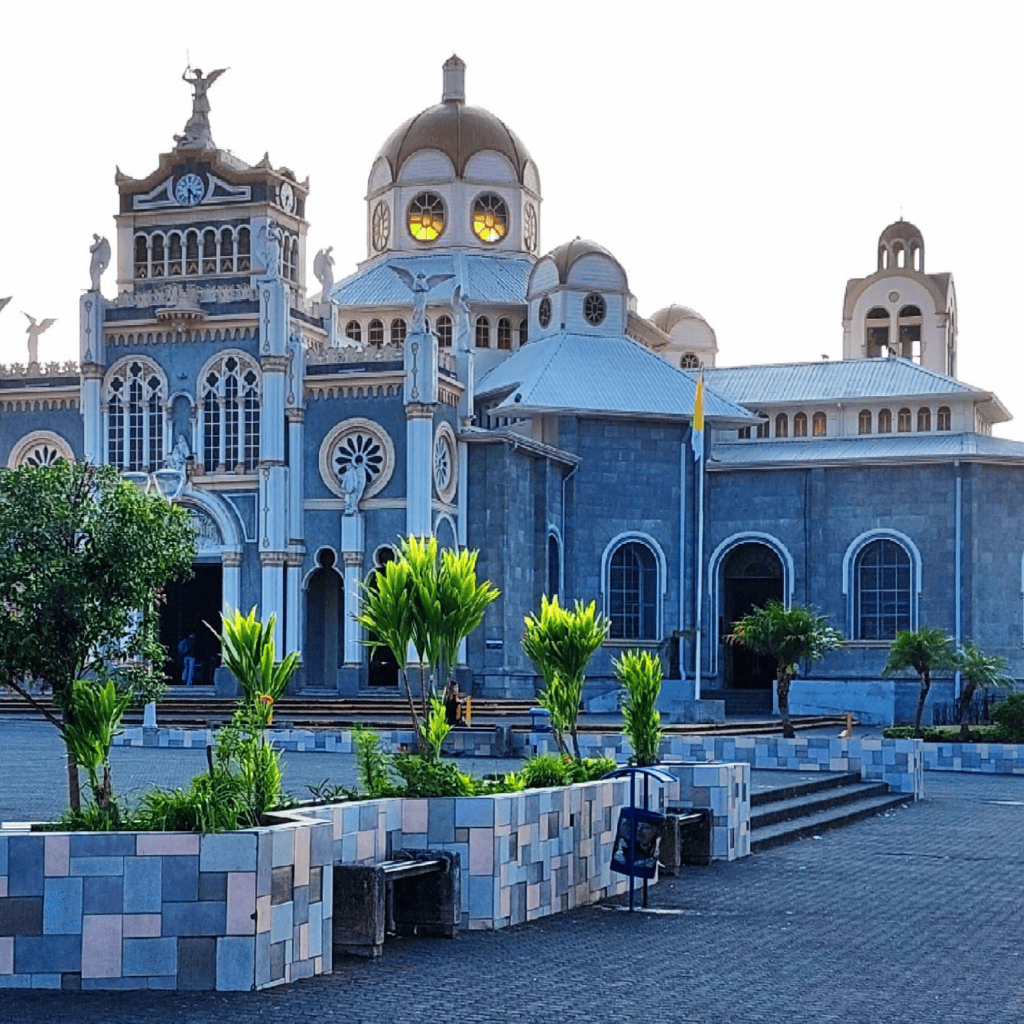
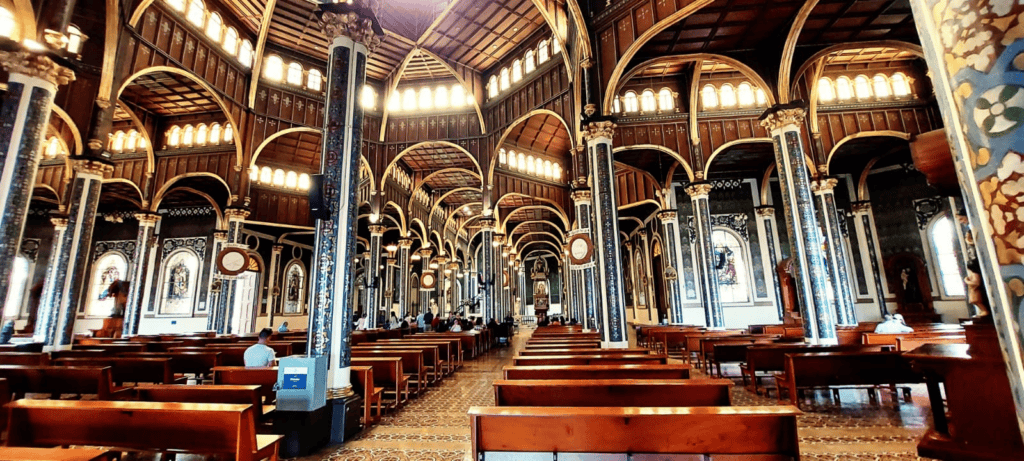
Whether you’re drawn to history or spirituality, the Basilica de Los Angeles is a must-see day trip in Cartago. Throughout your time here, remember to be a responsible visitor. This is first and foremost a house of worship. You will see pilgrims approaching the altar on their knees and others praying in the pews. Be respectful and use your better judgment when taking photos. Speak softly and be respectful.
Unwind and Rejuvenate at Hacienda Orosi Thermal Springs
Imagine this: After your day trip in Cartago, you sink into steaming hot springs nestled amidst a lush rainforest. Welcome to Hacienda Orosi Thermal Springs, a haven for relaxation and rejuvenation. These natural pools, heated by nearby volcanic activity, are believed to have therapeutic properties, perfect for soothing tired muscles and rejuvenating your skin. Breathe in the fresh air, wrap yourself in a mud bath, surrounded by the beauty of the Orosí Valley, and let your worries melt away. But that’s not all! Hacienda Orosi also offers guided or self-guided tours of their coffee plantation, where you can learn about the bean-to-cup journey and savor a cup of freshly brewed Costa Rican coffee – the perfect pick-me-up after your soak. Take a little time to tour the farm and meet the different animals. My favorite are the Watusi cattle!
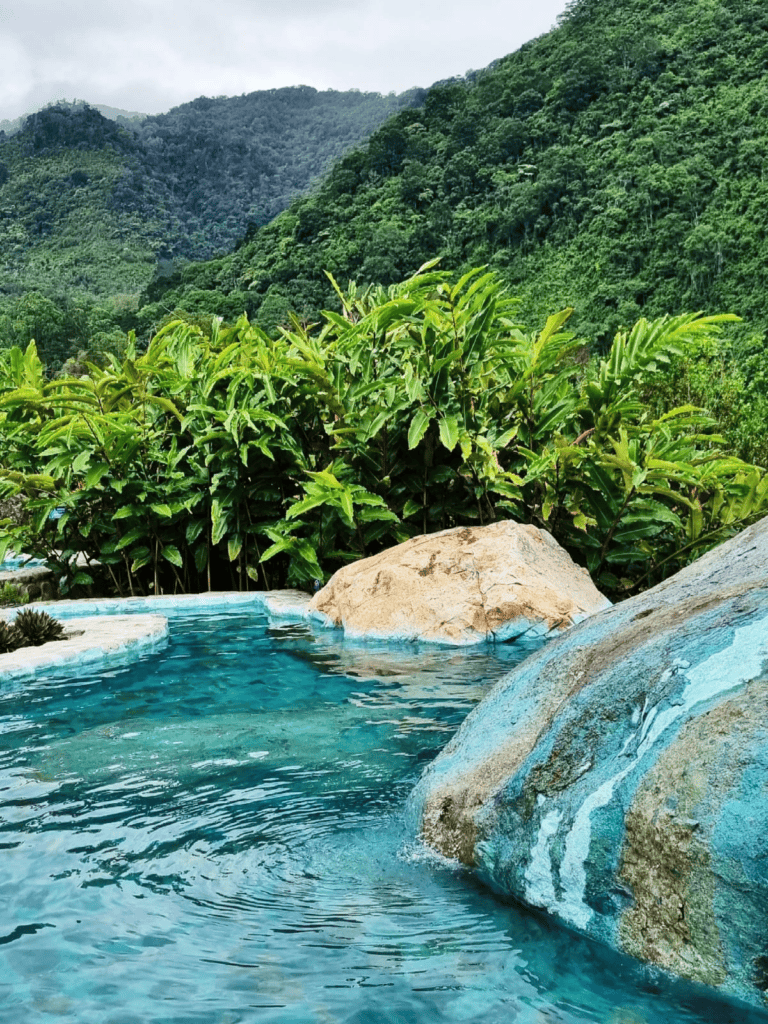
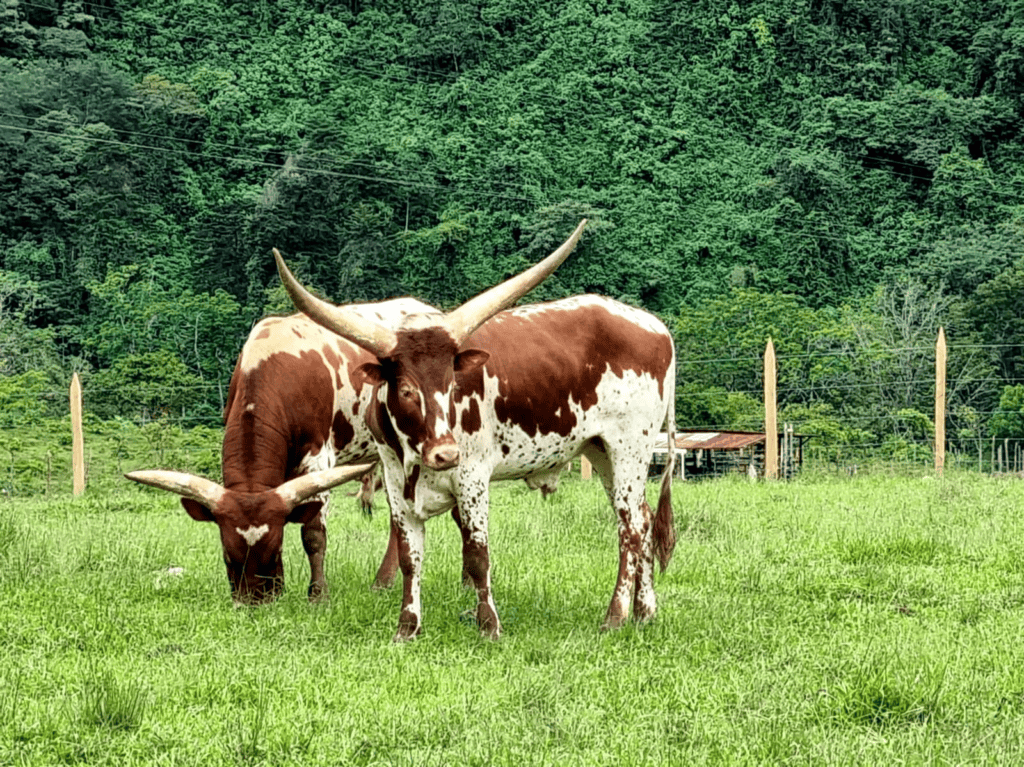
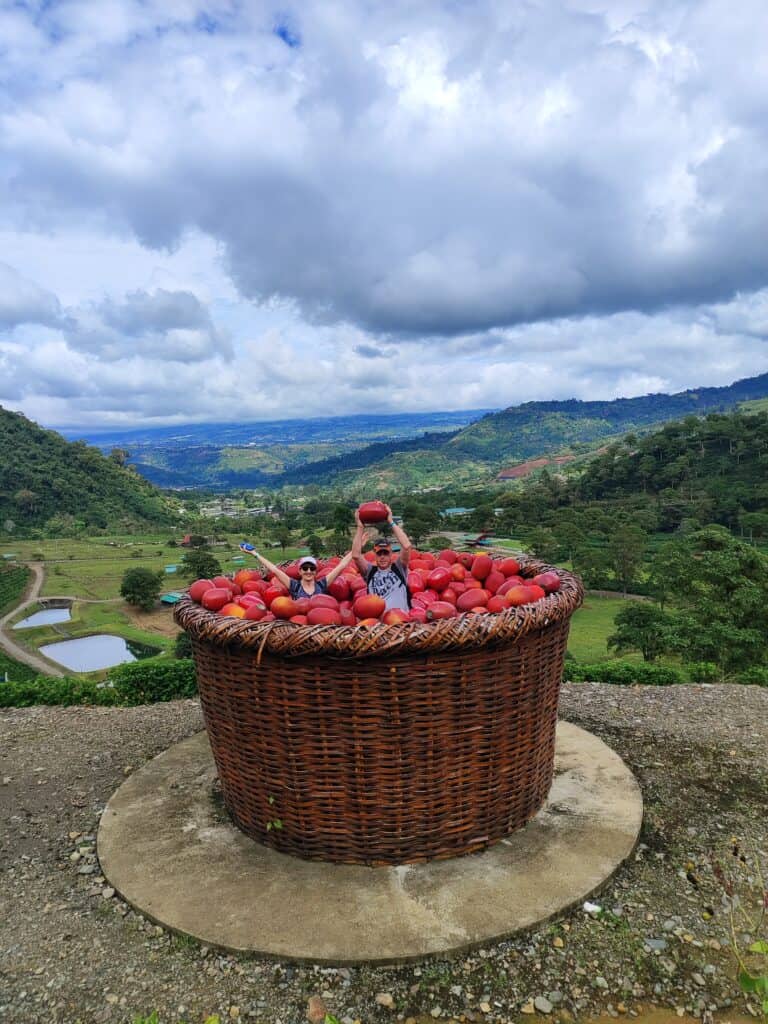
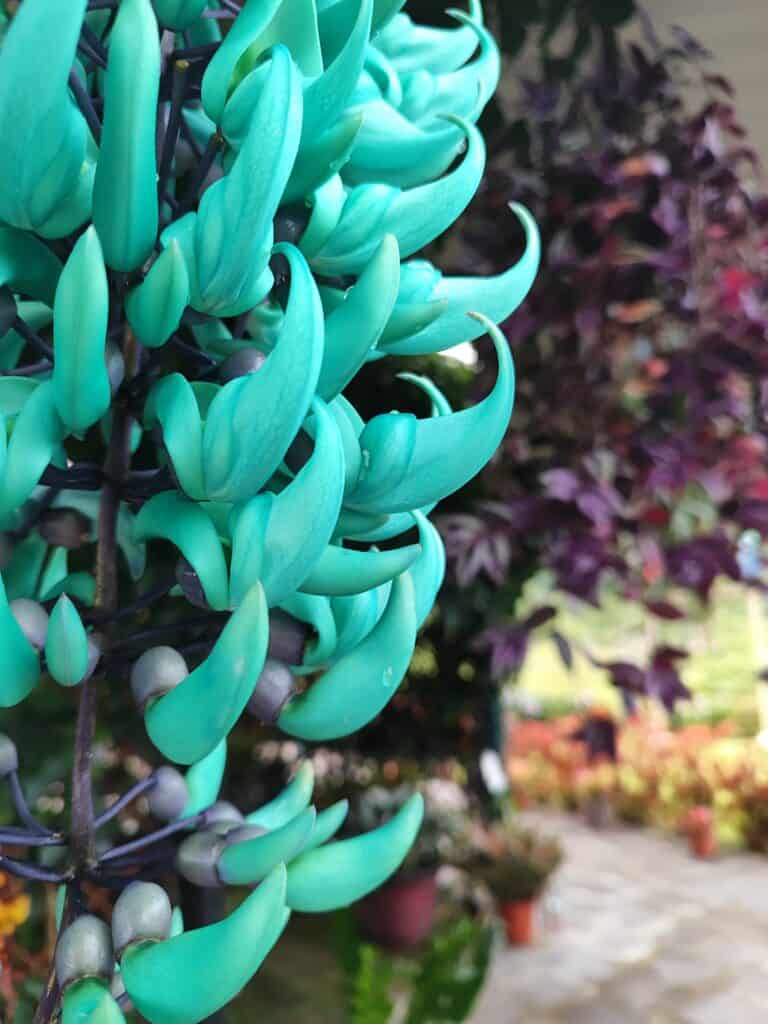
Immerse Yourself in Biodiversity at Tapantí National Park
Ready for an adventure unlike any other? Then Tapantí National Park awaits! Nestled within the Orosi River Basin, this park is a haven for nature lovers and explorers looking for a day trip in Cartago.
Tapantí National Park offers a chance to encounter a diverse range of mammals, from the large and elusive to the small and playful. The undisputed king of the forest is the Baird’s Tapir, Costa Rica’s largest land mammal. These shy herbivores, resembling small, stout hippos with prehensile snouts, are often found near water sources. Swinging through the canopy, you’re likely to spot troops of White-faced Capuchin monkeys, known for their intelligence and acrobatic prowess. Keep an eye out for other fascinating mammals like the nocturnal Kinkajou, a honey-loving relative of the raccoon, and the Paca, a large rodent similar to a guinea pig. Agile Agoutis, another rodent species, can be seen darting through the undergrowth. For the fortunate few, a rare sighting of a secretive wild cat like the Ocelot or Jaguarundi might occur. Even more elusive are the apex predators of the park, the Puma and the majestic Jaguar, though their presence is a testament to the park’s healthy ecosystem. White-tailed deer and rabbits also inhabit the park, adding to the diversity of mammalian life.
Tapantí is a birdwatcher’s paradise, boasting over 400 recorded species. Among the most sought-after sightings is the Resplendent Quetzal, a bird of breathtaking beauty with iridescent green plumage and long tail feathers. The vibrant colors of Toucans, such as the Emerald Toucanet, add a splash of tropical flair to the forest canopy. Various Trogon species, including the Violaceous Trogon, with its distinctive blue-violet chest, can be spotted perched on branches. Hummingbirds, tiny jewels of the forest, flit among the flowers, with rare species like the Black-bellied Hummingbird and White-bellied Mountain-gem offering a special treat for dedicated birders. Other avian inhabitants include Sparrow Hawks soaring overhead, various Flycatcher species perching on branches, colorful Tanagers adding splashes of color to the foliage, and Woodcreepers spiraling up tree trunks in search of insects. The diverse habitats within the park support a rich avifauna, making it a true birding hotspot.
Beyond mammals and birds, Tapantí National Park shelters a fascinating array of reptiles, amphibians, and insects. The park is home to 28 recorded species of reptiles and amphibians, including various frogs and toads, some with vibrant colors and fascinating life cycles. Snakes, both venomous and non-venomous, also inhabit the park, playing important roles in the ecosystem. The insect life in Tapantí is incredibly diverse, with countless species of butterflies, moths, beetles, and other invertebrates. Among the most impressive is the Thysania agrippina, the largest moth on the American continent, with a wingspan that can reach up to 12 inches. This incredible insect biodiversity contributes significantly to the park’s ecological balance and provides food sources for many of the other animals.
You can hike along diverse trails, ranging from easy strolls to challenging treks that reward you with breathtaking panoramas of the park’s lush landscape. But Tapantí holds more than just stunning scenery. This park is steeped in history, having been home to the indigenous Bribri and Cabécar people for centuries. Immerse yourself in the region’s rich cultural heritage and connect with the untamed beauty of Costa Rica on this unforgettable expedition.
Explore a Paradise of Plants at the Lankester Botanical Gardens
Calling all plant enthusiasts! Just a stone’s throw from Cartago lies the Lankester Botanical Gardens, a treasure trove for nature lovers and those with a passion for flora. Established in 1973, these sprawling gardens are dedicated to preserving Costa Rica’s diverse plant life, with over 3,000 species waiting to be discovered. Imagine weaving through vibrant tropical rainforests and mystical cloud forests, encountering a kaleidoscope of colors and textures. The botanical garden is divided into sections by plant type, including heliconias, ferns, and succulents. The gardens boast an impressive collection of orchids, many of them rare and endangered beauties. But even if you’re not a botanist, Lankester offers an idyllic escape. Meander along tranquil paths, lose yourself amidst stunning views of the surrounding mountains, and find a moment of peace by a serene pond in the Japanese garden. I love when they offer exhibits of Japanese art, bonsai, ikebana, and more.
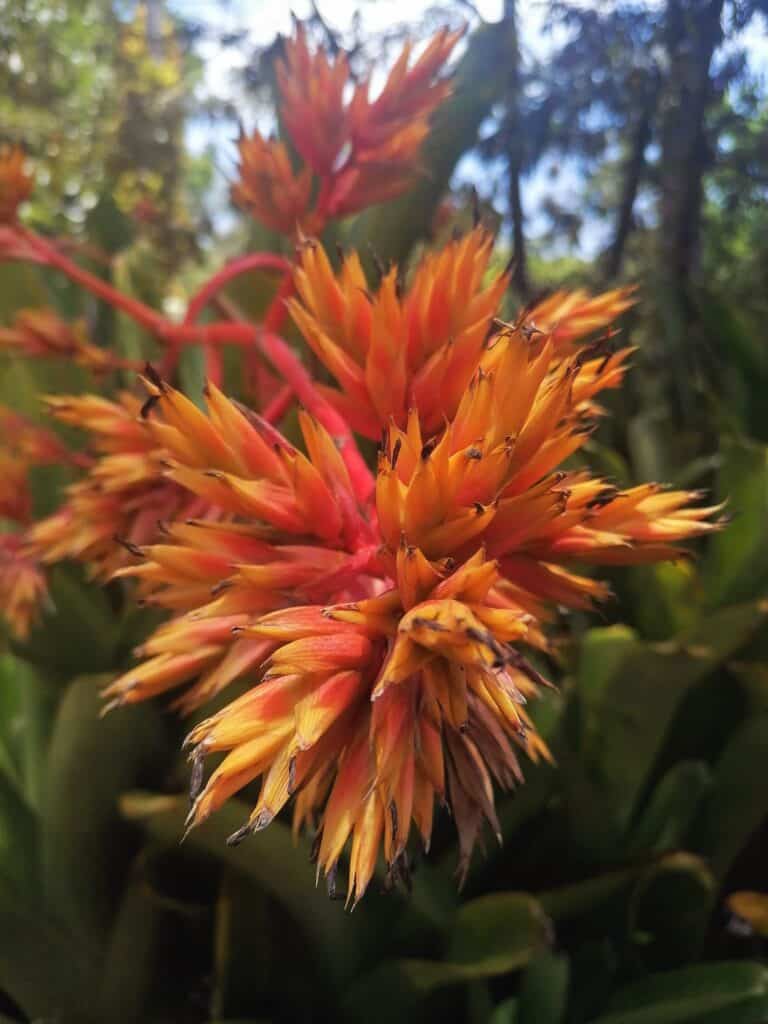
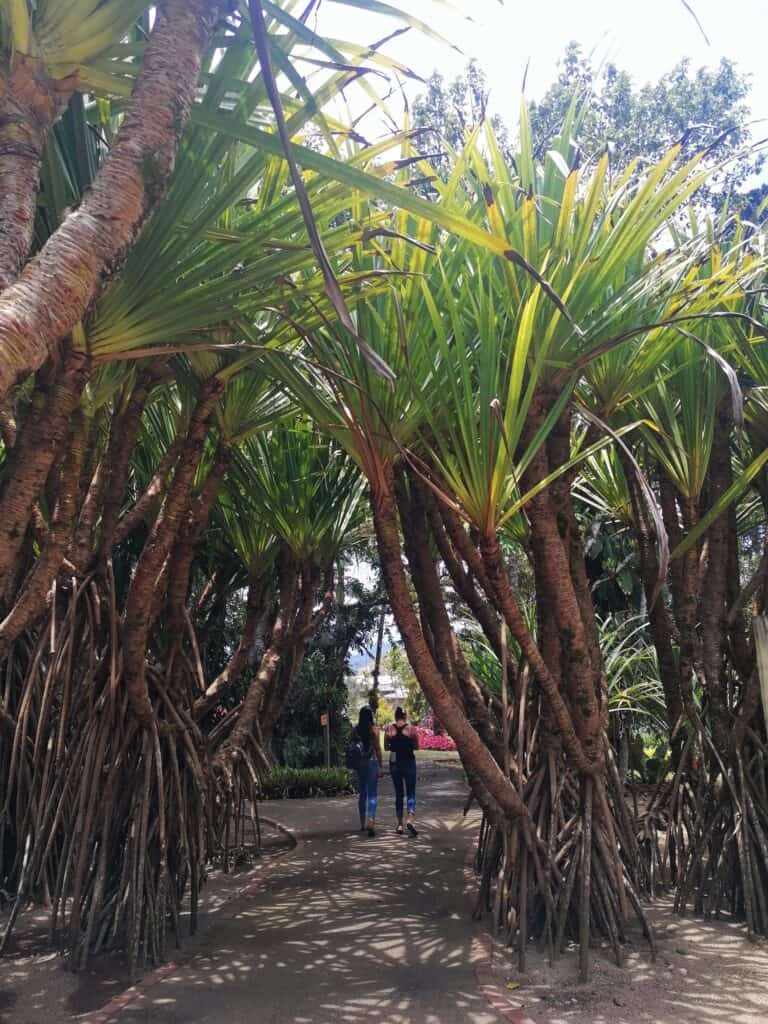
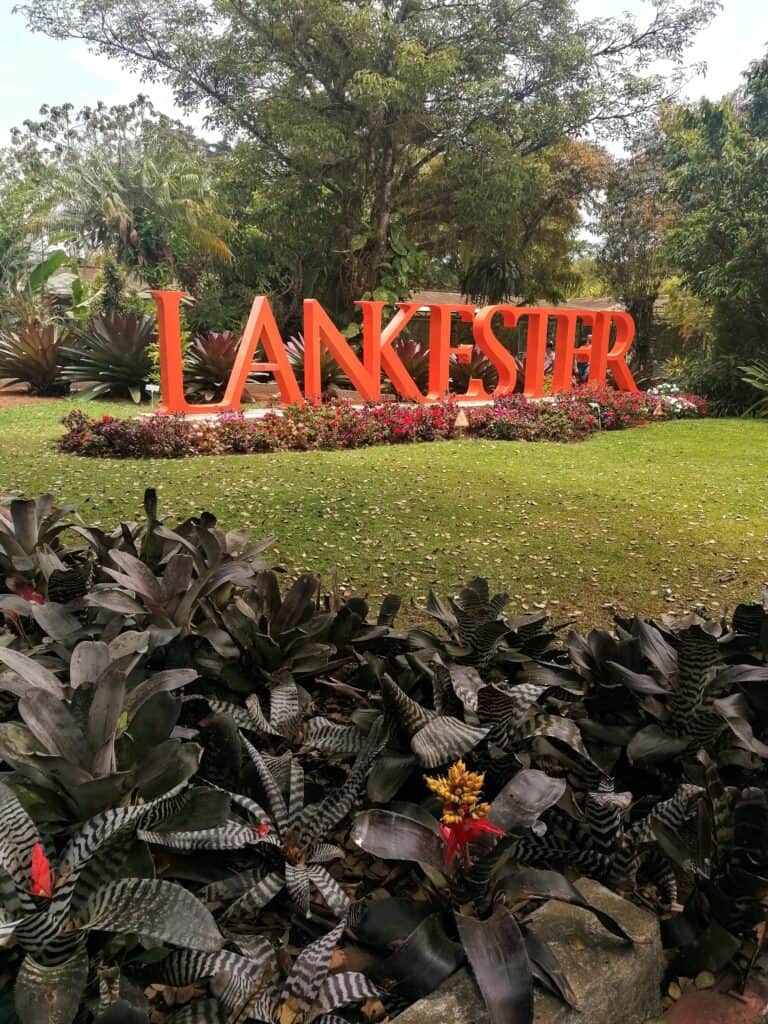
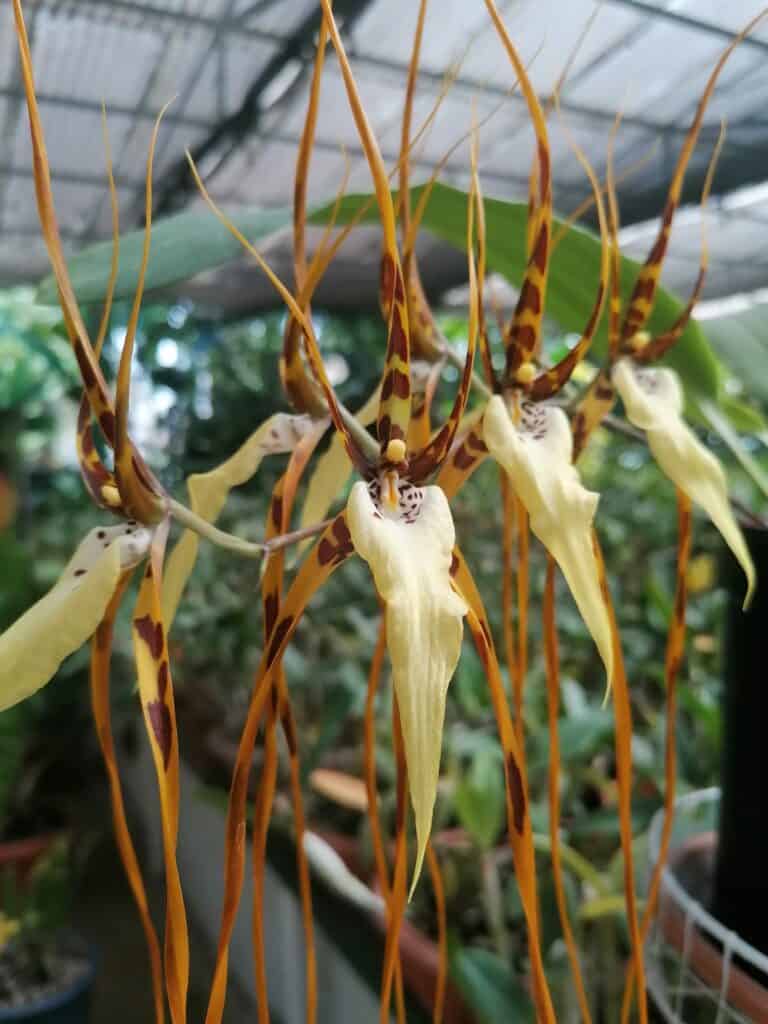

This is just a taste of the incredible experiences that await you on a day trip to Cartago from San Jose. From volcanic vistas and historical hotspots to relaxing hot springs and botanical wonders, this charming city offers something for every adventurer. Let’s craft your perfect itinerary and turn your Costa Rican vacation into an unforgettable adventure!
Cartago Day Trip Resources
Day Trip to Cartago planning tip: All national parks, like Irazu and Tapanti, require you to purchase tickets online in advance.
Volcán Irazú National Park, National System of Conservation Areas, retrieved December 22, 2024, from https://www.sinac.go.cr
Iglesia de Orosi, Municipalidad de Paraíso, retrieved December 22, 2024, from https://www.muniparaiso.go.cr
Tourism in Costa Rica, “Iglesia de Orosi Church”, retrieved December 22, 2024, from https://www.tourismincostarica.org
Las Ruinas de Ujarrás, Tourism in Costa Rica, retrieved December 22, 2024, from https://www.tourismincostarica.org
Weiner, S. (1995, October 29). The stony side of Costa Rica. The New York Times. Retrieved December 22 2024 from https://www.nytimes.com/1995/10/29/travel/the-stony-side-of-costa-rica.html
Municipalidad de Paraíso, Las Ruinas de Ujarrás, retrieved December 22, 2024, from https://www.muniparaiso.go.cr
Ruins of Cartago, Tourism in Costa Rica, retrieved December 22, 2024, from https://www.tourismincostarica.org
Ruinas de Cartago, Municipalidad de Cartago, retrieved December 22, 2024, from https://www.municartago.go.cr
Basilica de los Angeles, Tourism in Costa Rica, retrieved December 22, 2024, from https://www.tourismincostarica.org
Basilica de los Angeles, Municipalidad de Cartago, retrieved December 22, 2024, from https://www.municartago.go.cr
Tapantí National Park, National System of Conservation Areas, retrieved December 22, 2024, from https://www.sinac.go.cr
Hacienda Orosi Thermal Springs, Hacienda Orosi, retrieved December 22, 2024, from https://www.haciendaorosi.com
Lankester Botanical Gardens, University of Costa Rica, retrieved December 22, 2024, from https://www.lankester.ucr.ac.cr
Municipalidad de Oreamuno, ND, Sanatorio Duran, Municipalidad de Oreamuno https://www.oreamuno.go.cr/lugar/13/sanatorio-duran, December 22, 2024
